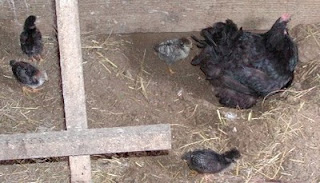I have canaries! :) Waa-hoo!
After several years of 'if I find one, I'll buy it'..... I determined to get a bit more serious.Pet stores were clueless, and the various 'grapevine' sources of information came up empty-handed.
Finally, I got the name of a breeder in Billings.
Thanks to Anne, I had a phone number!
After a few weeks of phone conversations, and some planning.... we had agreed on the birds I wanted, and a money order was sent!
BUT.....
Many of you know how hectic things are around here... and how there never seems time to get away from the ranch! Now you know it really is true: I couldn't see how I would have even one day free to drive to Billings!
I made arrangements with a local trucker, who makes regular trips to the Billings Livestock Yards... to pick up the birds. But that wasn't very satisfying!
Besides, Bruce Thompson (the canary guy) sounded interesting, and I wanted to see his Sanaan goats, chickens, and other animals!
Winter hit Montana mid November, and the road conditions hadn't been great! There were days and days of 'emergency travel only' in either the Billings or Harlem areas!
BUT WE MADE IT!
Last week, everything seemed as fine as could be expected, and with an approaching storm due to arrive the next day, we took off for Billings. My son went along to share in the driving! We left at 6 am and got home just after 8 pm. We didn't do a single other thing than drive and visit with Bruce AND LOOK AT THE CANARIES! :)
Bruce said let's go look at the canaries.. .and a blind man would have been able to find his way to the canary trailer! :)
You could hear the singing by LOTS of canaries from some distance!
The three of us went in the trailer... and found ourselves in the first little 'bedroom' filled with double and triple stacked cages with a narrow U-shaped aisle between!!!! Later, we went through a little bathroom crowded with supplies, etc. trash... into the 'kitchen/living room' where there were even more canaries. Bruce said a friend was in advanced cancer stages, and Bruce had 'adopted' his canaries.
Bruce apologized for the 'disorganization'... saying he had been spending time with his other barnyard animals, getting them ready for the cold weather, and had much to do in the canary trailer.
Yes, I saw seed on the floor, and lots of cages stacked up willy-nilly....... but every water dish was sparkling clean... and the birds just never stopped singing.... EVEN WITH TWO STRANGERS in the cramped quarters! I don't think the trailer has many visitors other than Bruce, but those birds were not scared a bit, and kept talking/singing even as Bruce caught the ones chosen for us!!!
He said 'disorganized', but actually, he knew each and every cage... which hatch it was, and from which parents, and how each cage was related to other cages. He had a breeding/hatching chart for this year.. on the back of a seed sack... and he used it for reference once or twice.... but he didn't need to refer to the records of band numbers to know which were hens, males, and which month they were hatched in!
He will soon put all the females in several large flight cages, and the males (singers as he calls them) in individual cages. He does a fall 'deep clean' and assessment of birds.
We had sent a money order for 7.... but I found a Gloster male that gave me a 'flirting look' and I was in love... so also bought him and a female Gloster.Here is what we came home with....
- A white male and a grey/white female for my mom.
- A yellow male and yellow female for my cousin.
- A yellow male and two females for me... one solid yellow, and one with small variegation on the head.
- A grey/white Gloster male (consort plain headed) and green/yellow crested female for me.
Mom and I compared notes tonight, and all the 'singers' had sang today!!!
They settled in very nicely and have surprised us with their conficence and calmness... while being so alert and busy.They are different than the canaries we had before... these are not spooked by even the dog shaking himself a foot from their cage! and these are so alert and happy!
A few more photos:
There were BEAUTIFUL reds:
These four cages were Bruce's friend's canaries:





































